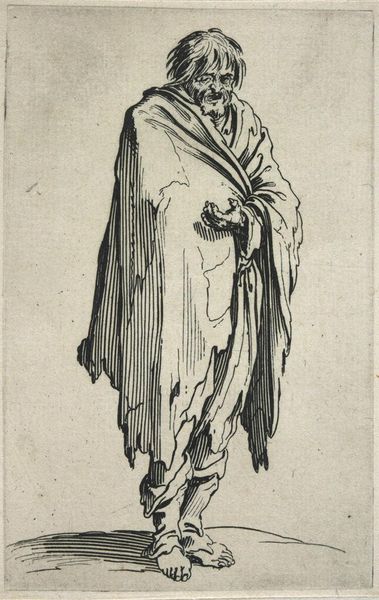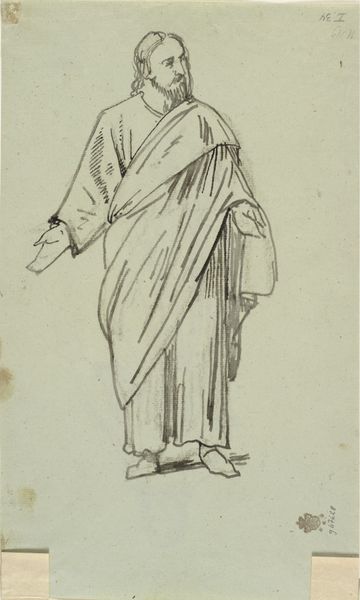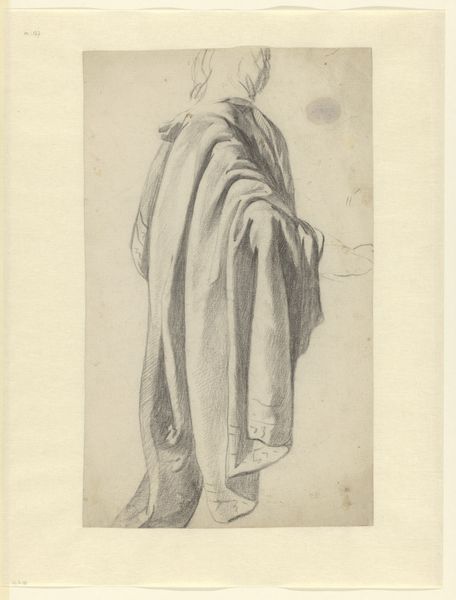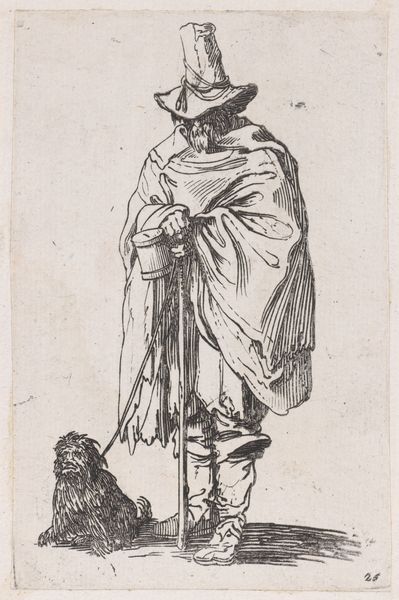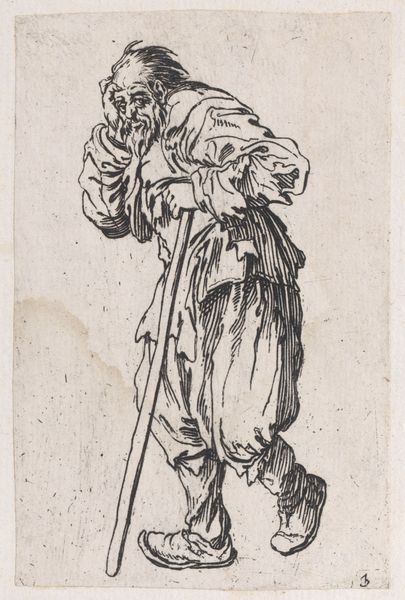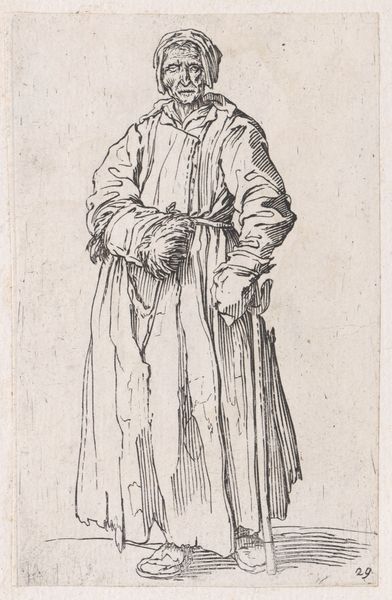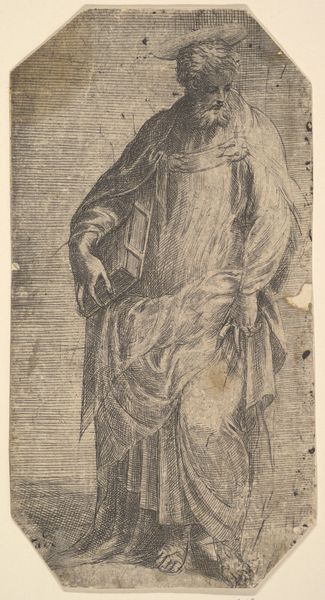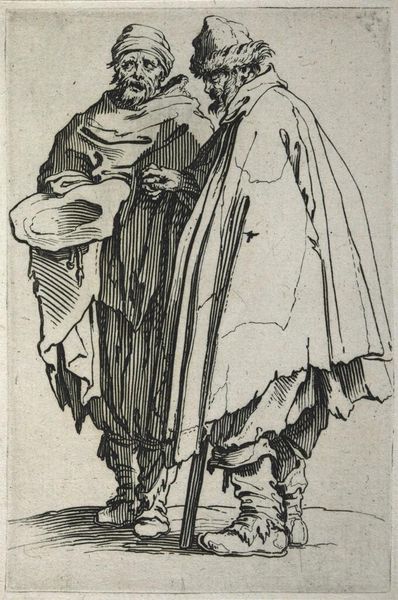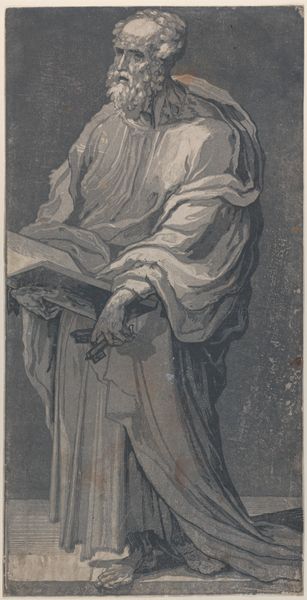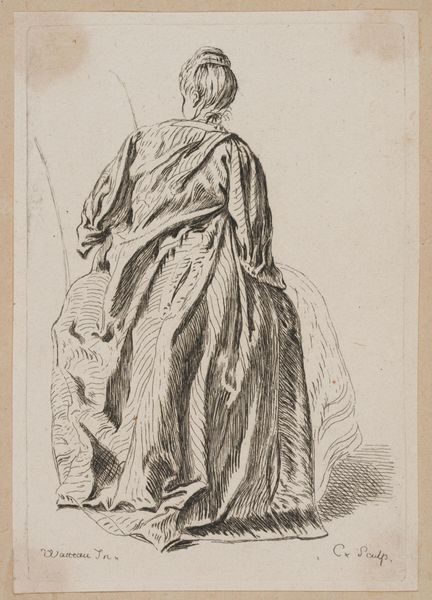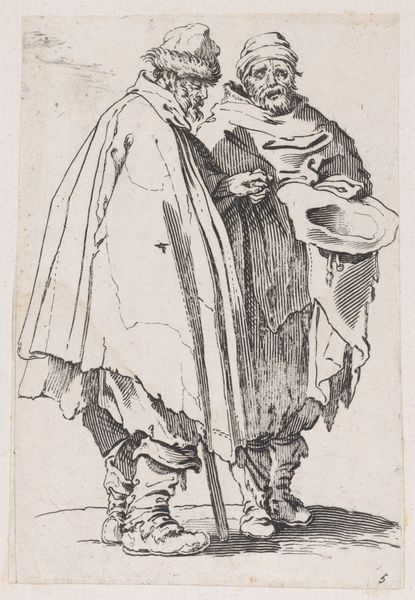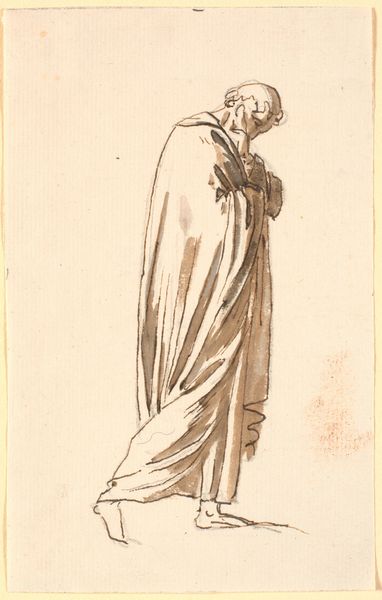
Reverse Copy of Le Mendiant a la Tête Découverte et aux Pieds Nus (The Beggar with Bare Head and Feet), from Les Gueux suite appelée aussi Les Mendiants, Les Baroni, ou Les Barons (The Beggars, also called the Barons) 1625 - 1700
0:00
0:00
drawing, print, engraving
#
portrait
#
drawing
#
baroque
# print
#
figuration
#
genre-painting
#
engraving
Dimensions: Sheet: 5 1/4 x 3 7/16 in. (13.4 x 8.7 cm) trimmed and backed
Copyright: Public Domain
Editor: This engraving, "Reverse Copy of Le Mendiant..." or "The Beggar," made sometime between 1625 and 1700, depicts a solitary figure, worn down and vulnerable. The textures are fascinating, all created through these tiny lines. How do you interpret this work? Curator: This image really underscores the social conditions of its time, doesn’t it? Consider the paper itself, likely handmade, and the labor-intensive process of engraving. This wasn't a mass-produced image like we see today; each print represented a significant investment of time and resources. Editor: Absolutely, you can see the artist’s hand so clearly, it feels so deliberate and intricate. I'm thinking, where did the artist get the cloak and pants, who manufactured these clothes, where did these resources come from? Curator: Exactly! The depiction of the ragged clothing is far from accidental. It speaks to the economy of cloth, the disparities in access to basic necessities, and the role of fashion—even in its absence—as a marker of social standing. Do you see how the figure is not idealized? Editor: Yes, it feels almost like a critique of the social structures that lead to poverty. The way the clothing drapes feels almost theatrical though, which seems interesting considering the subject matter. Curator: I agree. Consider also, that printed images like this circulated within a market. What need did they fill? Were they a form of social commentary, or a means of reinforcing existing class structures by presenting the poor as 'other'? Editor: It is easy to look at an image like this and not even consider the implications and realities surrounding it, beyond just the initial viewing and the artist. This offers a whole new way of thinking about it. Curator: Indeed, shifting the focus from artist to materials and means of production reveals the complex web of labor and consumption that underpin even seemingly simple images.

